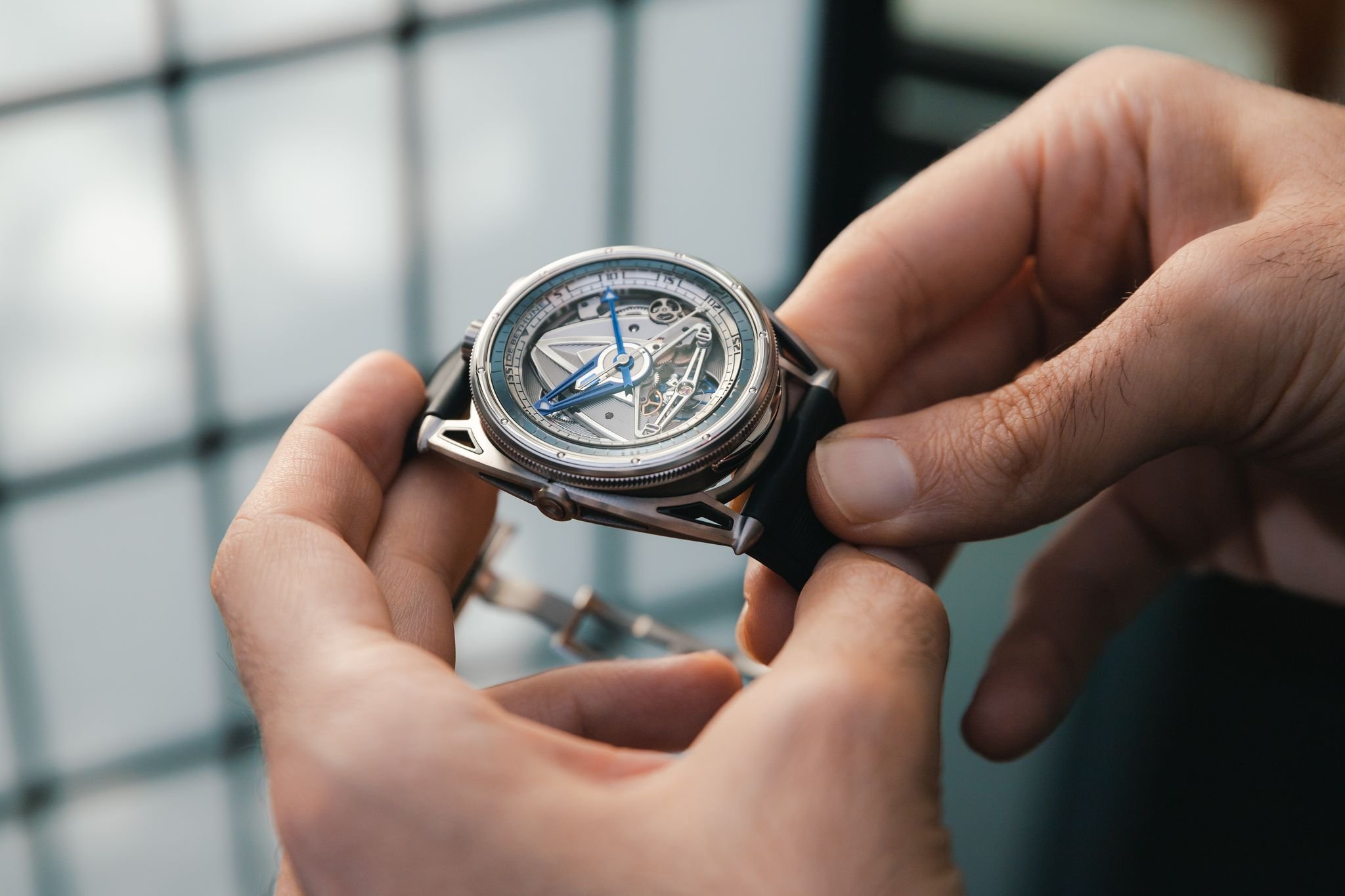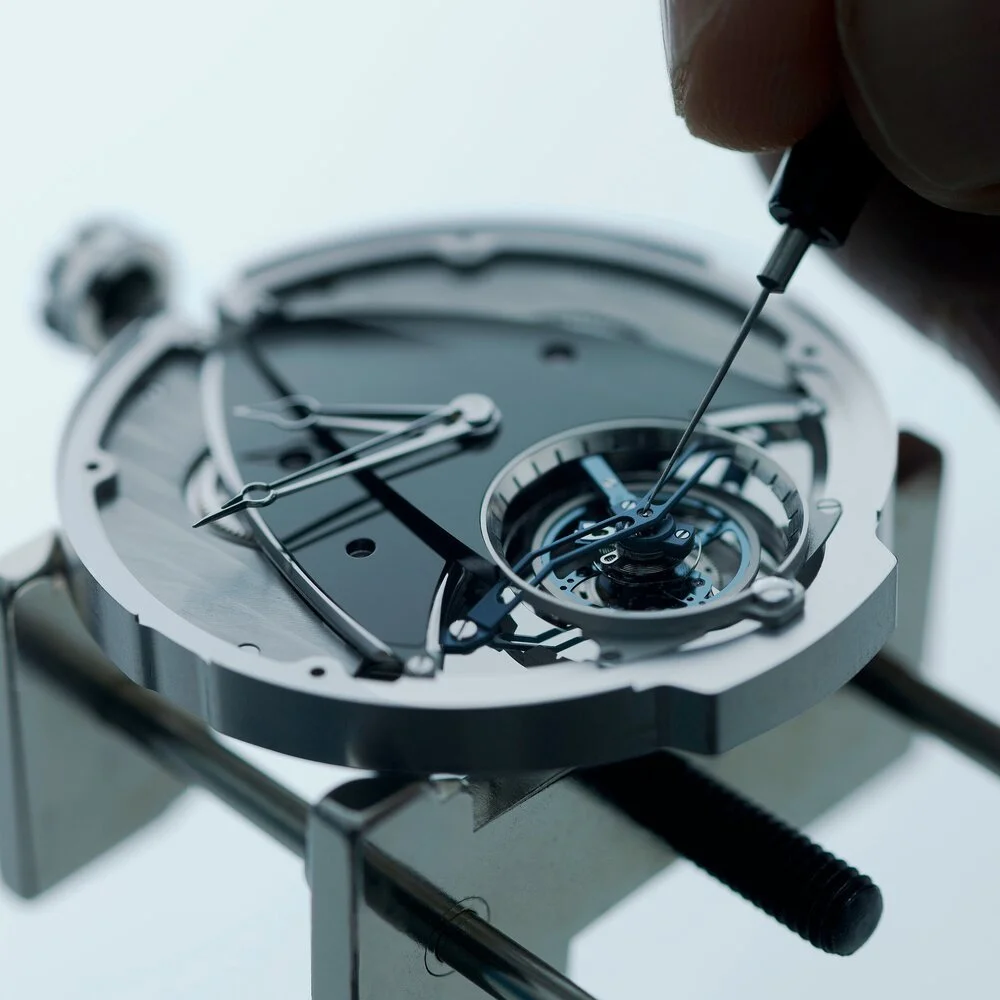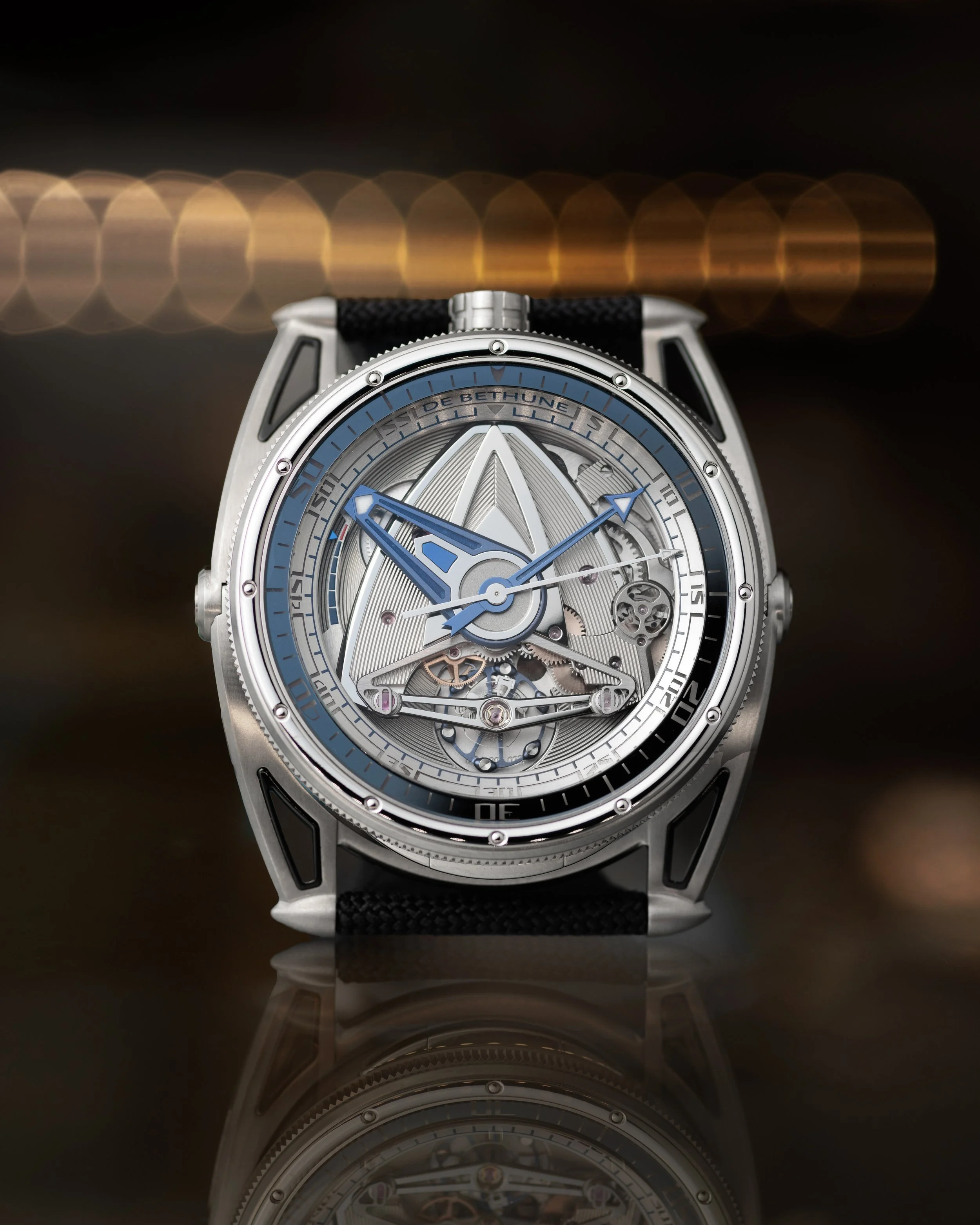Reading De Bethune's The Art of Watchmaking
Read time: 5min
For enthusiasts of independent watchmaking, the last few years have been exceptional for high-quality publications. MB&F’s Catalogue Raisonné, Denis Flageollet’s philosophical Horological Alchemy, Rebecca Struther’s Hands of Time, all came across our desk and provided in-depth information on watchmaking history and differing creative approaches to the discipline. Beyond the status quo of social media, these books are an essential way to dive deeper into topics that we all love.
Another publication on our radar for review is The Art of Watchmaking, a history of De Bethune, written by Arthur Touchot with foreword by Wei Koh. An Assouline book, it meets the exacting standards of the luxury publishing house. It's full of spectacular photography, the entire catalog of De Bethune timepieces since its inception in 2002, as well as in-depth write-ups on the brand’s history.
Without revealing too many spoilers, we’re taking a look at some of the aspects that we enjoyed in The Art of Watchmaking. It’s simply a great resource for anyone interested in diving deeper into De Bethune.
Tracing the evolution of De Bethune
One of the major struggles in writing about a brand with 2+ decades of creations is tracing the company’s evolution over time. Finding those throughlines in the creative endeavors of individuals and small teams can be challenging. Touchot does a great job at bringing readers through the entire development of De Bethune from its inception to its latest creations.
It’s interesting to see how far the brand has come, both technically and aesthetically, since its earliest days. The origins of the brand lies in a remastering of the classics – the DB1, DB2, DB3, and DB4 (the first collection) are extremely classical in their aesthetics, especially when compared to the later, iconic DB28 or wildly avant-garde Dream Watch projects. In light of Denis Flageollet’s pursuit of chronometric excellence, the first “major” leaps for De Bethune occurred with its technical innovations – the patented titanium and platinum balance wheel construction in 2004 as well as the triple pare-chute shock-absorption system in 2005. Major leaps in design occurred right after these technical innovations came about with the arrival of the DBS – first launching at Only Watch 2005 and then serially afterwards. The DBS’ horseshoe case remains extremely unusual, even nearly 20 years after its launch. A first push toward new shapes and materials, these were the earliest days in pushing the boundaries of avant-garde watchmaking, something now synonymous with De Bethune.
The DBS’ horseshoe case (Source: Reddit)
Hidden gems in a vast catalog
One thing that stands out when flipping through the entire catalog of De Bethune timepieces, all roughly 3100 in circulation: Denis Flageollet is constantly moving toward something new in the collection. While the brand has its hallmark forms (the floating lugs, “Delta” central bridge, the intensely blued titanium, etc.), there’s immense variety in both the complications and aesthetics of De Bethune timepieces. You name any combination of materials, complications, and there’s a large chance that it’s in the catalog.
The De Bethune Manufacture (Source: De Bethune)
For those that want to dig into some of the more exceptional timepieces, Touchot does a wonderful job at covering the Dream Watch Collection. Denis Flageollet’s canvas for experimentation, these timepieces push the limit of watchmaking through design, material science, and innovative mechanisms. Each is so different from the next that one almost has to squint to see that the thread connecting all five timepieces is Flageollet’s singular pursuit of modern watchmaking.
One of these hidden gems is the Dream Watch 4 – De Bethune’s venture into the realm of popular culture. Released during the height of the iPhone craze, Dream Watch 4 is a case for the iPhone 4 with an integrated timepiece. The case turns the iPhone into something even more sci-fi than historical writers in the genre could have imagined – polished titanium with blued timepiece in the center. Certainly a very niche part of the brand’s history, there’s something exciting about De Bethune’s willingness to experiment with this idea. After all, this is precisely the purpose of the Dream Watch Collection – it’s beyond reasonable, beyond “normal.”
The De Bethune Dream Watch (Source: De Bethune)
The role of high-quality publications in independent watchmaking
On the surface, publications like The Art of Watchmaking and the others previously mentioned provide a nice resource for collectors to dive deeper into one of their beloved indies. There’s more at play here though. These books are essential to craft a legacy for independent watchmakers. In the social media era, we all have nonstop access to brands, their latest releases, world-class photography of creations. It is far more difficult to find explanations of a watchmaker’s development from the early days to the present. Maybe, there’s a way to pack these stories into a social-media-friendly package, or there’s an unwillingness to do it so far, but it’s simply something that doesn’t fit easily into the format of posts and stories on the feed.
The De Bethune DB28 GS Gran Bleu (Pre-Loved) - Learn more
Constantly we talk about watches in light of art – they are art – and in the art industry, there’s a much wider ecosystem for its promotion. Its galleries (dealers in watches), collectors, social media, exhibitions (the likes of Geneva Watch Days), and of course, journals, magazines, publications. There’s much to be desired in the last category – in-depth, long-form histories of brands, showcasing the entire catalog. The full picture creates a fuller appreciation.
Anyone with even only one foot in the world of independent watchmaking knows that there’s no shortage of entertaining stories. We’re hopeful that more watchmakers and writers come together to tell the full story of their development, innovations, and challenges over the years.





